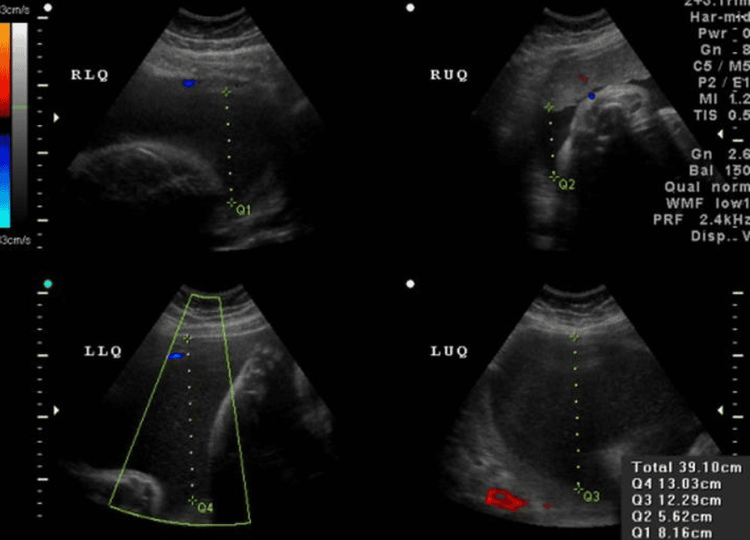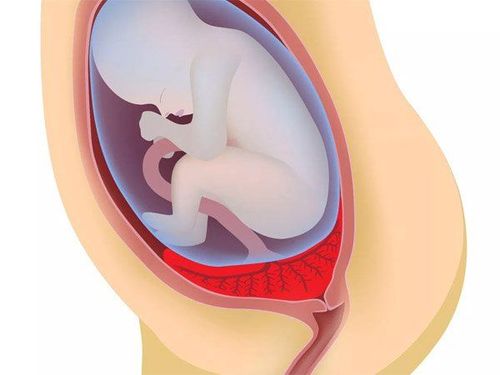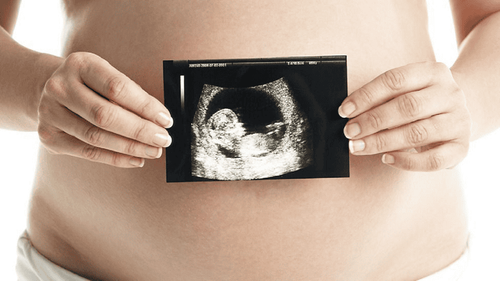This is an automatically translated article.
Posted by CKI doctor Truong Nghia Binh - Department of Obstetrics and Gynecology - Vinmec Danang International Hospital
Amniotic fluid is the amount of fluid that surrounds and protects the fetus during pregnancy, a woman is diagnosed with polyhydramnios in case the amount of amniotic fluid is 2 liters or more, if the amniotic fluid increases to 3 liters, the pregnant woman is diagnosed with amniotic fluid. polyhydramnios is severe and should be carefully monitored.
1. Find out the phenomenon of polyhydramnios during pregnancy
Polyhydramnios occurs in about 1% of pregnancies. Diagnosis of polyhydramnios is confirmed by ultrasound. Most researchers define: Polyhydramnios when the amnionic fluid index (AFI) is greater than 24 - 25cm; or when greater than the 95th or 97th percentile for gestational age. How to measure AFI: Divide the uterus into 4 equal parts, measure the maximum depth of each amniotic cavity, AFI is the sum of the above 4 measurements. Polyhydramnios is a high-risk pregnancy for women about the cause of polyhydramnios and warns of the risk of preterm birth during pregnancy.2. Diagnosis of polyhydramnios during pregnancy
Acute polyhydramnios can progress rapidly within a few days with acute symptoms such as severe abdominal pain, dyspnea, sometimes cyanosis, tachycardia, vomiting, generalized edema (extremities, vulva, abdominal wall, etc.) face) . Less commonly, oliguria is caused by compression of the ureter by the uterus. Polyhydramnios in the case of fetal edema can cause mirror syndrome in the pregnant woman, first described by Ballantyne in 1892: maternal conditions that "mimilate" the fetus, such as edema, proteinuria; and consequent preeclampsia. With chronic polyhydramnios, the amniotic fluid increases gradually, so pregnant women can tolerate abdominal distension. The first clinical sign suggesting a case of polyhydramnios is that the uterus is very large for gestational age, distended, leading to difficulty in palpating fetal parts and auscultating the fetal heartbeat. Differential diagnosis of polyhydramnios with ascites or large ovarian cysts by fetal ultrasound images.
3. Direction to handle polyhydramnios during pregnancy
Mild to moderate polyhydramnios rarely requires intervention. Hospitalization is necessary when pregnant women have difficulty breathing, abdominal pain or difficulty walking. Pregnant women need bed rest, diuretics, fluid and salt restriction do not bring significant effect. Aspiration of amniotic fluid also helps improve symptoms of shortness of breath in pregnant women, and amniotic fluid is taken for genetic testing or to determine fetal lung maturity. This procedure can cause complications such as: rupture of membranes, infection, or placental abruption. It should be noted that unexplained polyhydramnios in nearly half of all cases of polyhydramnios is an increase in amniotic fluid that is not associated with congenital abnormalities, maternal diabetes, immunological disorders, infections, or tumors. fetus or multiple pregnancy. However, even when imaging studies of the fetus are normal, the prognosis should be cautious because fetal anomalies and chromosomal abnormalities may be present.3.1. Polyhydramnios occurs in the second trimester of pregnancy. Indications for ultrasound examination of fetal morphology in depth to look for possible congenital malformations. Glucose tolerance test for 24-28 weeks pregnant Consult a prenatal diagnostic center for advice, consider conducting genetic tests to find the cause of chromosomal abnormalities, pregnancy infections. Should continue to monitor, manage high-risk pregnancy (pregnancy examination)

4. Complications of polyhydramnios during pregnancy
The most common complications for pregnant women in pregnancies with polyhydramnios are placental abruption, uterine contractions, or postpartum haemorrhage. In addition, there are complications of umbilical cord prolapse, abnormal position, uterine atony after childbirth or surgical intervention. Fetal abnormality, diagnosed during pregnancy or postpartum
The pregnancy process is monitored by a team of qualified doctors Regular check-up, early detection of abnormalities Maternity package helps to facilitate the process. birth process Newborns receive comprehensive care To register for examination and treatment at Vinmec International General Hospital, you can contact us on the website.
Please dial HOTLINE for more information or register for an appointment HERE. Download MyVinmec app to make appointments faster and to manage your bookings easily.














